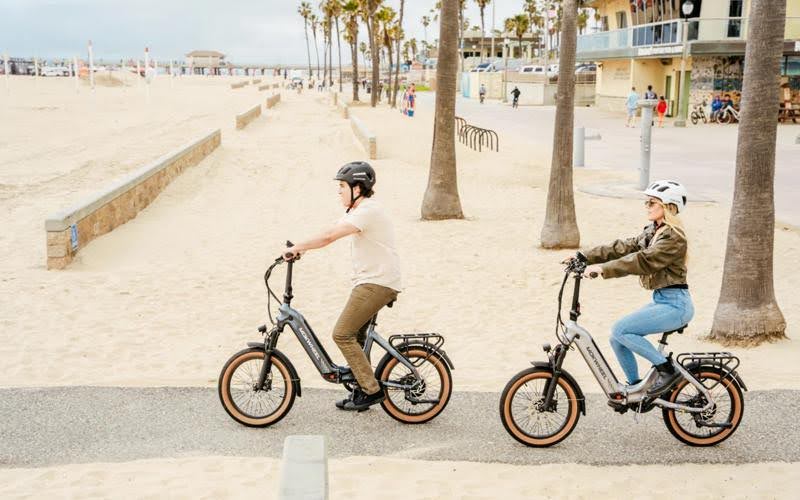Electric bikes and scooters have become highly popular throughout the United States in recent years. Even though e-bikes assist us in maintaining an active lifestyle and getting to our destinations faster, they come with several risks. Thus, in many states, there are several regulations for e-bike use.
A typical bicycle or scooter can reach a maximum speed of 14 mph, but an e-bike or scooter with an electric motor can reach speeds of 21 mph. This puts e-bikes at a higher risk of collision. The risk of accidents is further increased by the fact that riders often share the road with cars and trucks. Many drivers are unfamiliar with these new vehicles, resulting in misunderstandings and, unfortunately, accidents.
Understanding E-Bike Accidents
To understand e-bike accidents, one must examine several factors, including rider behavior, road conditions, bike quality, and various other aspects. By investigating these accidents, safety measures can be improved, rules can be changed, and responsible riding behaviors can be promoted.
E-Bike Accidents: Common Causes
Insufficient protective clothing, reckless riding, and violations of traffic rules are among the most common causes of e-bike accidents. Driver inattention, poor road conditions, low visibility, reckless driving, and improper vehicle interactions also contribute to this problem.
Failure to maintain the vehicle properly and speeding beyond recommended limits could cause technological failures, such as faulty brakes or motors.
Batteries Catching Fire
When an e-bike catches fire, it can be dangerous and unexpected. Fortunately, the majority of these fires can be prevented with caution and due care. Never charge your battery pack without sufficient research and understanding of what you are doing. If you have a spare battery pack, store it in a protective metal box when operating your bike. Better yet, a BMS or battery management system can mitigate the risks.
Lastly, purchase your lithium battery from a reputable dealer to ensure it can withstand overcharging and high temperatures.
Excessive Acceleration
Many e-bike accidents occur when riders accelerate too fast or start from a dead stop in high electric gear. These crashes usually occur at low speeds and cause little damage, but they can be frightening to witness or be involved in.
As with all e-bike accidents, this can be prevented if due care is exercised. For instance, you should never apply full throttle to an electronic bike unless it moves. In addition, you may want to consider installing a switch during rides so that you can choose between various power levels. Ensure that your controller and throttle settings are appropriate before you head out for a long ride.
Violating Traffic Regulations
Unbelievably, most e-bike collisions don’t happen because of any defects in the design or idea of the e-bikes themselves but because of how users treat them. E-bikes are hybrids between regular motorcycles and regular bicycles.
In most jurisdictions, e-bikes are more commonly regulated than motorcycles. However, electronic bikes are similar to low-performance motorbikes in their functions and speed. Ignoring this fact can lead to dangerous situations. E-bike riders, for example, are not legally required to follow speed limits or road signs. However, if these regulations are followed, riders and others on the road could be protected.
E-Bike Safety Tips
It is possible to die in an accident while riding an e-bike. It is, therefore, critical to prioritize safety while maximizing e-bike benefits as a mode of transportation. You can prevent accidents by following these tips:
Training for riders
Traffic rules, road awareness, and defensive riding practices must be taught to reduce accidents and ensure safe riding on e-bikes. The ability to brake, maneuver, and handle effectively improves rider control. Maintenance awareness is also part of adequate training, which can help riders avoid breakdowns by identifying potential problems.
Riders who learn these abilities gain confidence, develop informed decision-making skills, and contribute to a safer riding environment.
Wearing safety equipment
It is crucial to wear safety gear when riding an e-bike to prevent accidents and minimize potential harm. Wearing a helmet designed to protect the head from injuries during falls and collisions and reflective clothing can lower the chances of injuries. Safety equipment also makes e-bike riders more visible at night and in bad weather.
Strong gloves will provide a firmer grip and protection if you abruptly stop or are in an accident. In addition to elbow and knee pads, they keep the hands safe against fractures and abrasions. If an accident occurs, proper safety equipment creates a protective barrier that decreases the severity of injuries. Everyone can enjoy their e-bike riding experience safely and confidently by prioritizing safety equipment.
Develop defensive riding skills
Adopting a defensive riding style is important to avoid e-bike accidents. When you stay close to the road and anticipate potential risks, you will minimize your chances of getting into an accident. Defensive riding also promotes careful speed management in adverse weather conditions or crowded areas. With defensive riding habits, riders can enjoy a reduced risk for accidents and safer trips.
Keeping up with traffic rules
You can promote peaceful interactions between road users by obeying traffic signals and maintaining a safe speed. Even if you’re only riding an e-bike, you still need to properly communicate your intentions to other drivers while on the road.
Knowing one-way streets, pedestrian crossings, and prohibited locations is imperative to avoid potential collisions. To ride an e-bike safely, it is critical to respect traffic laws to avoid misunderstandings.
Being aware of road conditions
E-bike riders should know road conditions, such as potholes, slick roads, and narrow routes. By understanding the road inclines, e-bike riders can regulate power assistance, maintain a constant speed, or change their riding style, all essential for ensuring a safe ride. By keeping track of road conditions, riders can have a safer, more enjoyable experience on the road.
Dealing with E-bike Accidents
Being cautious is essential when dealing with e-bike accidents and emergencies. After an e-bike accident, two types of treatment may be required: emergency and post-accident care. A post-accident support service is provided after a cyclist has been involved in an accident, and it depends on the healing process after an e-bike accident.
You should also seek medical attention immediately following an accident. Document the incident by taking pictures and gathering witness information. You must also report the claim to the insurance company.
Lastly, you should seek legal counsel if you believe your accident was caused by another party’s negligence. Getting a lawyer is crucial if you want to seek damages like medical costs and lost wages.







